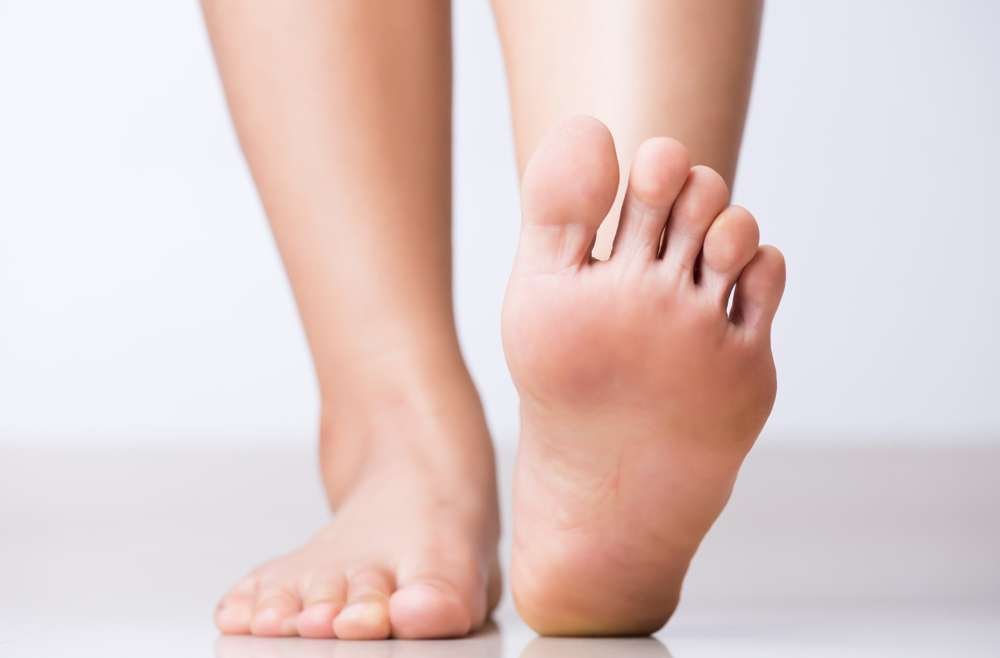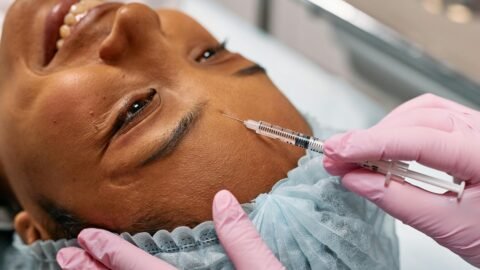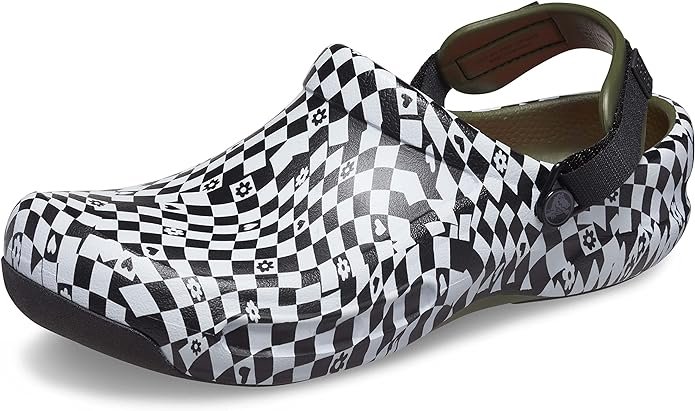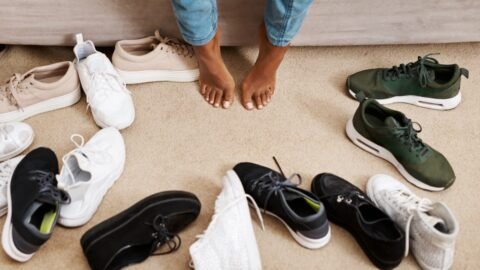As a nurse, my feet is my most important asset. They carry me through long shifts, back and forth across hospital floors, and help me provide the best care for my patients. It’s crucial for me, and nurses like me, to ensure that our feet are given the attention and care they need to maintain not just our physical health but also to support the demanding nature of our profession. This means adopting a routine that safeguards against the common foot problems that most nurses often face.
One of the most effective steps I incorporate into my foot care routine is wearing compression socks. These socks are not just for comfort; they aid in circulation, reduce swelling, and prevent the development of pain due to standing for extended periods. Moreover, proper hygiene and daily inspections are necessary to quickly address any issues that may arise, such as cuts or abrasions, especially after a long work shift when the chances of such problems are higher. Keeping my feet clean and dry is a simple yet effective practice to minimize the risk of infections and other complications.
In addition to routine care, selecting the right footwear is critical. I make it a point to wear shoes that are well-fitting and supportive, shopping for them in the late afternoon when my feet are slightly swollen to ensure a comfortable fit throughout the day. For further protection and comfort, I sometimes use shoe inserts or orthotics, which can be a boon in relieving foot pain arising from prolonged periods of standing. By being proactive and attentive to foot care, I and many other nurses can continue to perform at our best without being sidelined by preventable foot ailments.
Understanding Foot Anatomy and Function
The human foot is a complex structure that balances support with flexibility, essential for bearing weight and allowing movement. My focus here will be on the bone framework, muscle mechanics, and common foot problems observed in a nursing context.
Bone Structure and Support
The foot consists of 26 bones categorized into three regions: the forefoot (metatarsals and phalanges), midfoot (cuboid, navicular, and cuneiforms), and hindfoot (talus and calcaneus). My role often involves educating patients on the importance of arch support to distribute body weight and prevent stress injuries, particularly in professions that require prolonged standing, like nursing.
Muscle Groups and Movement
Muscle groups in the foot include the intrinsic muscles, which originate and insert within the foot, and the extrinsic muscles that start in the lower leg and insert into the foot. This muscle arrangement facilitates complex movements such as plantar flexion and dorsiflexion. In my experience, proper muscle function is crucial for maintaining balance and posture, especially when managing busy hospital shifts.
Common Foot Issues Nurses Encounter
Nurses often encounter foot issues like plantar fasciitis, bunions, and tendonitis. Due to prolonged periods of standing and walking, I recommend vigilant foot care to prevent these conditions. For nurses wearing compression socks to improve circulation can be vital in preventing varicose veins, a common foot-related problem exacerbated by long hours on the feet.
Essential Footwear for Nurses
In my experience, proper footwear is crucial for nurses due to the long hours spent on their feet. Here, I provide targeted advice on choosing the right shoes, the use of compression socks, and when to consider orthotics and insoles.
Selecting the Right Shoes
When selecting the right shoes, I look for a pair that offers a balance between support and comfort. A shoe with a firm heel counter and adequate arch support can prevent foot fatigue and pain. It’s important to choose non-slip soles for safety and materials that allow feet to breathe. The fit must be snug but not tight, and I always consider any foot conditions I might have, such as flat feet or high arches. A tip I’ve found useful is to shop for shoes later in the day when feet are slightly swollen to ensure a comfortable fit throughout the workday. Shoes that have an ergonomic fit are particularly beneficial.
Benefits of Compression Socks
Compression socks are a game-changer for me. They help by increasing circulation and reducing the risk of swelling and varicose veins. Properly fitted compression socks can prevent clots and alleviate discomfort from standing long hours. Nurses benefit from compression socks as they can reduce the feeling of heavy and aching legs after a day’s work.
Orthotics and Insoles
I recommend orthotics and insoles to nurses who need additional foot support or have specific foot conditions. These devices can be custom-made or bought over the counter and are designed to align the foot and ankle into the most anatomically efficient position. They can help redistribute weight and provide extra cushioning. I’ve noticed that insoles can make a significant difference in comfort, especially when combined with the right pair of shoes.
Daily Foot Care Rituals

In my routine as a nurse, I’ve realized that maintaining foot health is crucial due to the long hours spent on my feet. Here are the specific daily steps I take to ensure that my feet are well-cared for.
Hygiene Practices
Every day, without fail, I ensure to wash my feet thoroughly with soap and water, as it’s the foundation of good foot hygiene. I pay close attention to the spaces between my toes to prevent fungal infections. After washing, I dry my feet carefully, especially between my toes to minimize the risk of athlete’s foot.
Moisturizing and Skincare
Moisturizing is a step that I never skip. I use a foot-specific moisturizer after drying to keep the skin from becoming dry and cracking. I make a habit of inspecting my feet for blisters, cuts, or sores as I moisturize. This not only keeps my skin soft but also allows me to notice any issues early.
Nail Care Basics
Proper toenail trimming is essential in avoiding conditions like ingrown toenails. I trim my toenails straight across and avoid cutting too close to the skin or rounding the corners to prevent ingrowth. I also keep my nails clean and check for signs of fungal infections, such as changes in color or texture.
Proactive Foot Health Strategies
Maintaining foot health is critical for nurses who spend long hours on their feet. I’ll share strategies for regular assessments, targeted exercises, and rest techniques that provide the foundation for healthy feet.
Regular Foot Assessments
I understand that thorough foot assessments are essential for identifying potential issues early. This includes checking for changes in moisture, temperature, and color, as well as examining the condition of my nails and the presence of corns or calluses. Through regular self-exams, I can catch signs of Charcot foot early and take action to prevent further complications.
Exercises for Strength and Flexibility
My daily routine includes exercises to bolster foot strength and flexibility, which are vital for supporting arches and preventing injuries. Simple exercises like toe curls, heel raises, and ankle rotations can significantly improve my foot health. I also incorporate balance exercises like single-leg stands to enhance overall foot and ankle stability.
Rest and Recovery Tips
After a long shift, I prioritize rest and recovery to alleviate any stress my feet have undergone. Elevation of my legs helps to minimize swelling, and I use compression socks to increase circulation, which can alleviate neuropathy and reduce swelling. Additionally, I ensure that my footwear is properly fitted; supportive shoes are key, as they help distribute my weight evenly during long periods of standing.
By following these strategies, I take proactive steps to sustain my foot health, better serving my well-being and my ability to care for others effectively.
Managing Work Shifts Without Foot Pain

As a nurse, I understand that long hours on my feet can lead to discomfort and pain. By adopting effective standing techniques and mindful movement and positioning, I can manage my work shifts without foot pain.
Effective Standing Techniques
When I’m standing for extended periods, I ensure my weight is evenly distributed across both feet. I frequently check my posture, making sure my ears, shoulders, and hips are aligned vertically. Proper footwear is critical, and I opt for shoes with good arch support and a snug fit at the heel to prevent sliding. A pair of quality running shoes is often my go-to choice, as they provide both comfort and stability.
I also incorporate subtle movement into my stance, such as heel raises or shifting from one foot to the other. This helps maintain circulation and prevents stiffness. On particularly long shifts, I utilize anti-fatigue mats whenever possible, providing a cushioned surface that helps alleviate pressure on my feet.
Movement and Positioning
During a shift, I make a conscious effort to change my position and engage in gentle stretching to promote blood flow. I prioritize regular movement, taking short walks when I can, and utilize simple exercises like flexing my toes and rotating my ankles.
I heed the advice of scheduling regular breaks, and even short intervals of sitting can significantly reduce the strain on my legs and feet. When sitting, I elevate my feet if possible to decrease swelling and improve circulation. By implementing these methods and staying aware of my body’s needs, I handle my nursing responsibilities while minimizing foot pain.
Handling Common Foot Conditions

In my practice, I’ve seen that diligent foot care is essential for maintaining podiatric health, especially for nurses who spend numerous hours on their feet. Here’s how to address some of the most common foot conditions.
Blisters and Calluses
Blisters can occur from constant friction between the skin and footwear. My advice is to wear well-cushioned socks as a preventive strategy. In case of a blister, it’s important to cleanse the area, apply an antiseptic, and cover with a sterile bandage to prevent infection.
Calluses form from repeated pressure or friction on the skin. To manage them, I recommend regularly using a pumice stone on wet skin to gently remove the thickened skin. Moisturizing afterwards keeps the skin supple and reduces the risk of calluses becoming painful.
Fungal Infections
Fungal infections thrive in moist environments. Keeping feet dry and clean is crucial. If you notice signs of athlete’s foot or other infections, over-the-counter antifungal creams can be effective. For persistent cases, consult a healthcare professional for prescription-strength treatments. It’s also important to change socks daily and choose shoes that breathe to reduce moisture.
Plantar Fasciitis Management
Plantar fasciitis is a common condition I see, characterized by sharp pain in the heel. For prevention and relief, I recommend wearing supportive shoes that offer proper arch support and using orthotic inserts if necessary. Regular stretches and exercises that strengthen the foot muscles can also provide long-term benefits.
Techniques for Foot Pain Relief
In my years of nursing, I’ve found that proper foot care is crucial. Below are some effective methods for alleviating foot pain that I’ve learned and practiced.
Massage and Relaxation Methods
Massaging feet can significantly reduce pain and improve circulation. I often recommend a routine that includes gentle stretching and massaging the soles, which can be done using a tennis ball or a specialized foot roller. Additionally, I practice yoga and mindfulness to relax my feet, especially techniques focusing on the feet and lower limbs to enhance flexibility.
Cold and Heat Applications
For acute pain and swelling, I apply a cold pack for 15-20 minutes several times a day, ensuring there’s a cloth barrier to protect my skin. In contrast, for chronic soreness, I use a warm compress or soak my feet in warm water to relax the muscles and joints. Remembering to alternate between heat and cold treatments can provide substantial relief.
Pain Medication Considerations
Regarding pain medication, I am judicious. Over-the-counter anti-inflammatories like ibuprofen can be taken to manage pain, but it’s vital to stick to the recommended dosage. For persistent or severe pain, I consult with a healthcare provider before taking any prescription medications, as they’re able to assess my individual needs and potential risks.
Footwear Maintenance and Hygiene

Ensuring proper footwear maintenance and hygiene is crucial for foot health. I focus on keeping the interior as pristine as the exterior, paying close attention to the potential buildup of bacteria and odor.
Regular Shoe Cleaning
I maintain a routine of cleaning my shoes regularly, ensuring to remove dirt and debris after each use. It’s important to:
- Brush off loose soil with a soft-bristle brush.
- Wipe the exterior with a damp cloth and mild soap.
- Air dry shoes away from direct heat to prevent material damage.
Disinfection Protocols
Disinfection is key in preventing fungal and bacterial growth within shoes. My protocols include:
- Spraying the inside of shoes with a disinfectant spray designated for footwear.
- Using antifungal powders or sprays, especially if I’ve experienced athlete’s foot.
Shoe Rotation and Replacement
Rotating and replacing shoes at appropriate intervals is vital to foot health. I adhere to the following:
- Rotate shoes daily to allow them to air out, reducing moisture buildup and bacteria growth.
- Monitor for wear and tear, replacing shoes before they lose structural support, typically after 300 to 500 miles of use.
Professional Foot Care Resources

As a nurse, it’s my duty to ensure I have access to the best professional foot care resources. These tools and relationships are critical to providing high-quality care and education to patients.
Continuing Education
Online Courses and Webinars: My continuous learning involves taking part in accredited online courses and webinars to stay current with the latest in foot care. Leading institutions offer these programs, and they often include practical skills like the assessment and treatment of foot ailments.
Certifications: I pursue specialty certifications in foot care to enhance my skills. The certification process typically involves a combination of coursework and clinical experience, ensuring proficiency in foot care.
Podiatric Consultations
Referral Networks: I establish strong connections with podiatrists and other foot care specialists to facilitate referrals. It’s crucial to identify when a patient needs a higher level of care, which these professionals can provide.
Collaborative Care: I engage in collaborations with specialists to create comprehensive care plans. We share insights on conditions like Charcot foot or common issues such as hammer toes and work together to address complex patient needs.
Advocating for Better Foot Health in Healthcare

In my role, I actively promote the importance of foot care within healthcare settings, focusing on improving conditions, educating nursing staff, and fostering supportive networks.
Improving Workplace Conditions
As a nurse, I know that long shifts contribute to foot strain, which is why I champion the need for ergonomic flooring and appropriate footwear. Having comfortable mats in areas where nurses stand for extended periods can make a significant difference in reducing foot fatigue. Likewise, I encourage my workplace to facilitate access to high-quality, supportive shoes tailored for healthcare professionals.
Raising Awareness Among Nursing Staff
Staying informed is crucial, so I organize regular training sessions on foot health for my fellow nurses. By sharing insights from certified foot care specialists, I highlight how preventive measures, such as proper nail cutting and management of common foot problems, can maintain nurses’ foot health and prevent complications.
Creating a Supportive Community
Lastly, I believe in the power of community. Alongside my colleagues, we’ve established a forum where experiences and advice on foot care can be shared. This has helped many nurses, including myself, to discover community resources and promote family involvement in our daily foot health regimen, enhancing overall well-being.
Frequently Asked Questions
In my years of nursing, I’ve gathered essential tips and strategies for foot care that are crucial for maintaining our health and comfort on the job.
What strategies can I employ to prevent foot pain while working long shifts?
I always focus on regular movement and stretching exercises to improve circulation, along with ensuring I wear supportive footwear. It’s also important for me to vary my stance and use anti-fatigue floor mats when possible.
Which types of shoes are recommended for nurses to maintain foot health and comfort?
The shoes I recommend should have a supportive arch, cushioned soles, and be made of breathable material to keep the feet dry and comfortable. It’s essential they fit well and provide stability.
How can I effectively use compression socks to support foot and leg health?
I wear graduated compression socks that apply the right amount of pressure to promote blood flow, starting at the ankles and decreasing towards the knees. This helps to reduce swelling and fatigue during long shifts.
What are the top methods for alleviating leg pain after standing for extended periods?
Elevation of the legs during breaks helps me reduce swelling. Also, I perform regular leg strengthening and stretching exercises to enhance circulation and muscle endurance.
What daily foot care practices should I follow to prevent plantar fasciitis?
I maintain a routine that includes stretching the arches of my feet, wearing supportive footwear even when I’m not working, and applying ice to any sore areas after a shift to reduce inflammation.
What general advice do healthcare professionals offer for maintaining healthy feet?
Healthcare professionals often stress the importance of keeping feet clean and dry, checking regularly for any signs of infection or injury, and choosing the right footwear for daily activities. It’s also recommended to manage diabetes effectively to prevent foot-related complications.








[…] Taking practice tests is another proven method to develop familiarity with the exam format and gauge your progress. Regularly taking practice tests can help identify areas of weakness and improve your performance. Additionally, the NCLEX is a computer-adaptive test, so practicing online or using apps that simulate the testing environment can be beneficial. […]